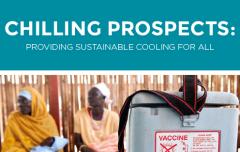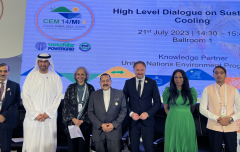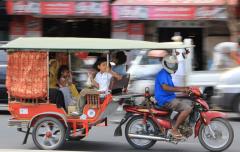India can tackle the problem of hot cities
South Asia has a unique opportunity to show the rest of the world the way to providing cooling access for all
The intense heatwave that has struck South Asia in the last few months has proved to be particularly challenging for those living in cities. While global temperatures are rising, urban temperatures are climbing at even faster rates.
The problem is only likely to get worse as South Asian cities grow more crowded, while heat waves are expected to become more extreme, last longer and happen more frequently. One study predicts that cities can expect the average high temperature to increase by 3 to 5 degrees Celsius and their lowest temperatures to increase by 3 to 7 degrees Celsius by 2050. Extreme heat, already the deadliest natural disaster in an average year, will become even deadlier.
This dangerous mix of extreme heat trends was seen, for example, in Karachi, where 65 people died in the span of three days in May. It underscored the threat of extreme urban heat and the life-or-death risks it creates for poor, vulnerable populations. Chilling Prospects: Providing Sustainable Cooling for All, recently issued by the UN-affiliated Sustainable Energy for All and the Kigali Cooling Efficiency Program, illuminates the massive scale of the challenge facing South Asian cities — but also offers solutions to address the problem.
The report reveals that more than 630 million urban dwellers worldwide, most of them in South Asia, are at risk because of a lack of access to basic cooling services that they need to survive and thrive.
Addressing urban heat is much more than “avoiding a negative”. It is an investment that would boost urban economies around the world — from Phoenix and New York City to New Delhi, Karachi and Dhaka. A growing body of research finds that the broad benefits of cooling down cities — such as improved energy efficiency, worker productivity, air quality, health and equity — are potentially worth billions of dollars to a single city. This represents an economic benefit for vulnerable low-income urban populations.
A 2017 study published in the journal Nature Climate Change estimates that the failure to act on urban heat will cost the average city nearly 6% of its GDP by 2100. On the other hand, the study found that investing in sensible heat mitigating measures, such as so-called “cool roofs” or painting roofs white or other light colours to reflect sunlight, would generate a 1,200% return! As the Cooling for All report highlights, capturing this “cooling access dividend” should be the focus of global efforts to address rising temperatures.
One example to emulate is Almeria, Spain, which has a unique tradition of whitewashing its greenhouses. Remarkably, based on a 20-year study comparing weather station data, researchers found that Almeria cooled down by 0.4°C compared to a 0.3°C rise in temperatures in surrounding regions lacking whitewashed greenhouses.
We also know that cool surfaces can make a meaningful difference in indoor air temperatures. Field studies of dwellings in Sanand in Gujarat indicate that a building without mechanical cooling can be 3-4°C cooler with cool roofs and walls. An alternative strategy is the introduction of “green roofs,” which involves the planting of vegetation on roofs, which also reduces urban temperatures.
Fortunately, some South Asian cities, including Ahmedabad and Dhaka, are recognising the importance of cool and green roofs to combat high urban temperatures and are implementing programmes to encourage their use.
These programmes can also be coordinated with new urban development plans that offer opportunities to radically rethink the design of building to optimise cooling loads and technologies that can deal with them. In India, for example, 75% of the buildings required by 2030 have yet to be built and so there is a huge opportunity for designing for passive cooling or retrofitting buildings to promote natural cooling and ventilation.
Adopting these strategies is important in another way. The growing middle class in South Asia is likely to buy more air conditioners to beat the heat. But many devices will be low-cost and inefficient models that will only consume more energy powered by the fossil fuels that contribute to global warming. We face the prospect of a vicious cycle where a warming planet creates the need for more cooling that could result in more damaging emissions.
South Asia already has at hand simple, affordable and efficient solutions at the local level to deal with the problems of rising urban heat. This provides a unique opportunity for the region to show the rest of the world the way to providing cooling access for all.
Kurt Shickman is executive director of the Global Cool Cities Alliance, Washington, DC and a member of the Cooling for All Global Panel formed last year by SEforALL and K-CEP
SEforALL note: This article first appeared in the Hindustan Times and can be found here





